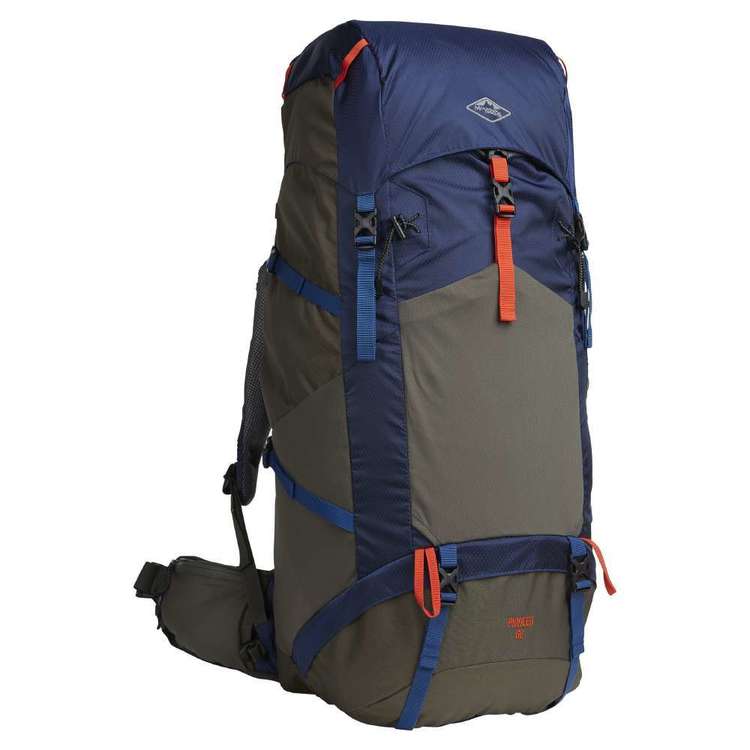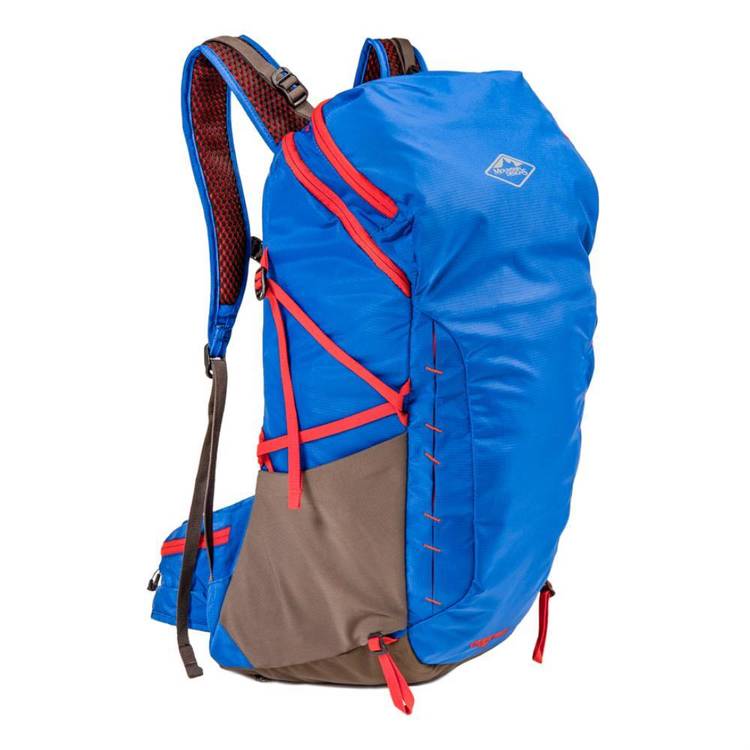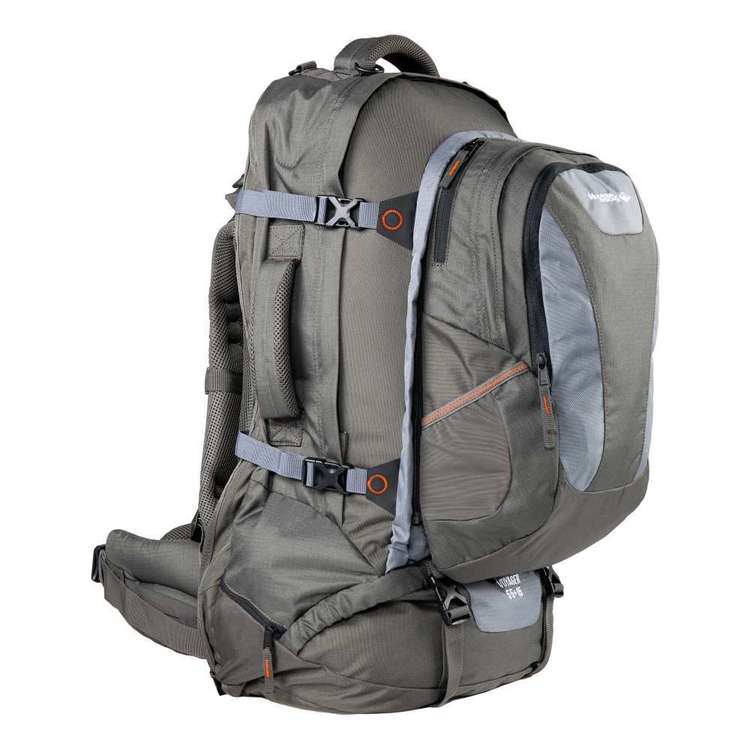| Your browser is not supported. | ||
|
Please browse our site using any of the following options:
| ||
How To - Fill A Pack
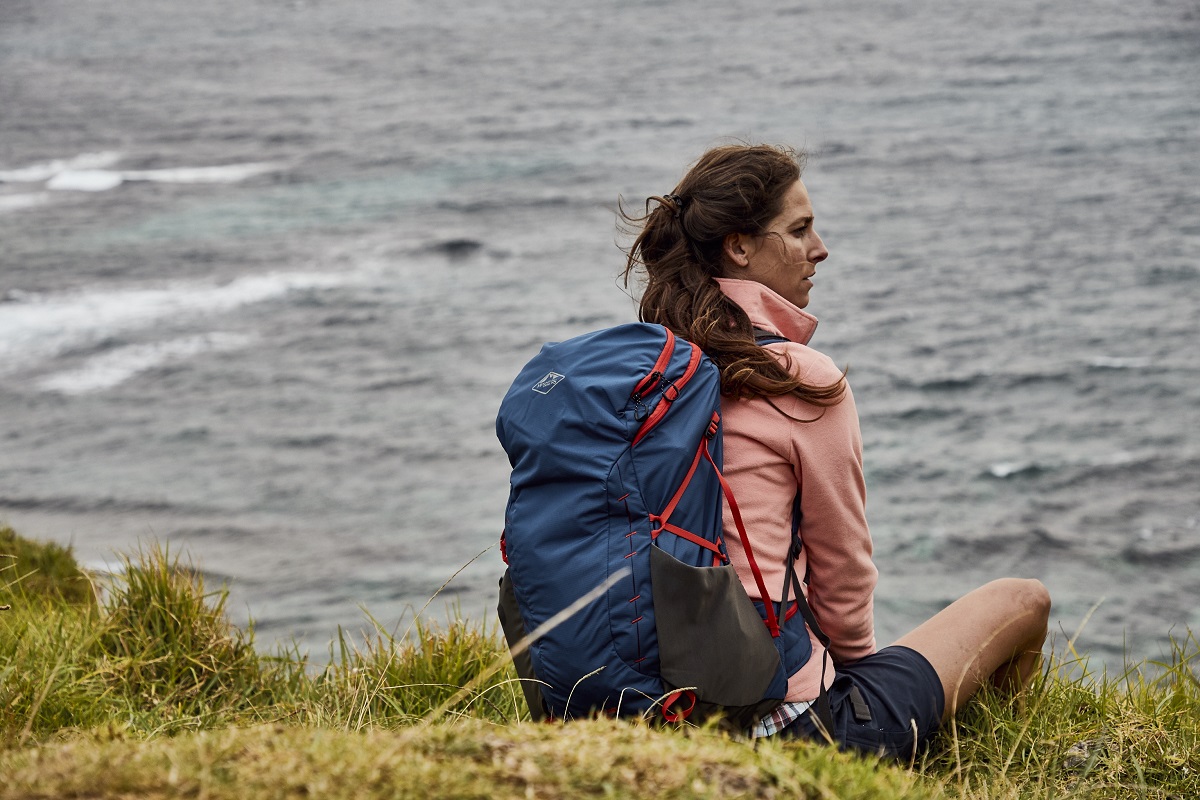
When embarking on a hike or travel, never underestimate the importance of pack organisation. It can affect your comfort, centre of balance, back health (if worn for extended periods) and accessibility to items. Use this guide to ensure you're packing smart:
Packing Your Gear
- Make a checklist of all the items that you want to take with you. Our Gear Guides are a great starting point.
- Collect the various items of gear and spread them on the floor in front of you.
- Identify quick grab items that will require easy access while in transit (such as a map, flashlight, water bottle, etc) as they belong in easy to reach areas like external pockets.
- Fill by weight. Start packing by the following rule of thumb:
- Light, large, soft items at the base: including sleeping bag, sleeping mat and clothing.
- Heavy items at the back: including tent poles and pegs, hydration bladders and cooking equipment.
- Medium or bulky items at the front: including tent body and fly, cooking utensils and food.
- Light, easy access items at the top: including outerwear clothing and first aid.
- Quick-grab items in the lid and accessories pockets: including snacks, maps and navigation equipment, headlamps and electronics.
Packing this way will put the heaviest items close to your centre of gravity (your back) and make it easy to keep your balance when on the move.
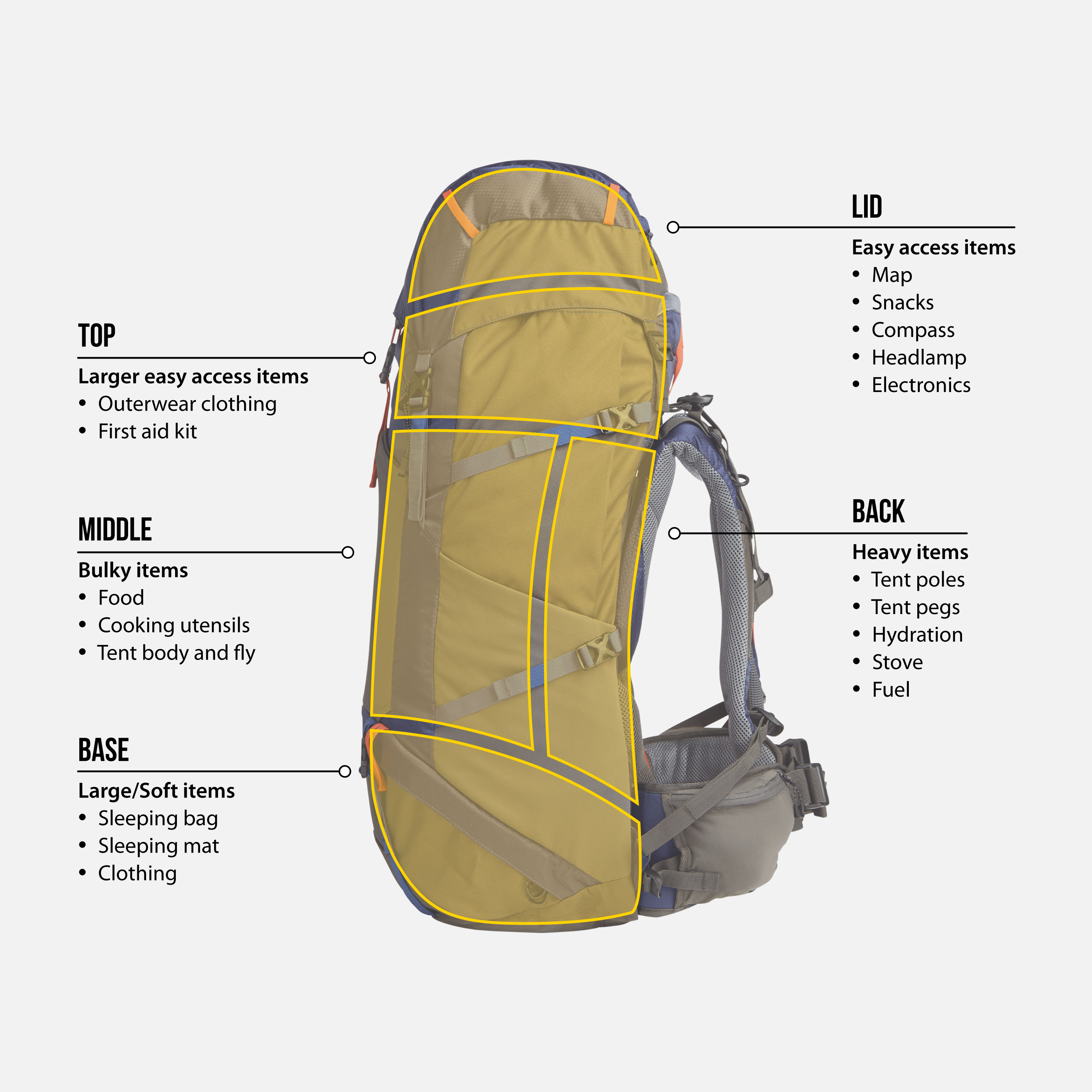
Filling your pack correctly will ensure even weight distribution for balance, easy accessibility to certain equipment, and above all else, comfort.
General Tips For Packing
- Use smooth items to cushion cornered objects that might otherwise pinch against your spine. Clothing, such as jackets or socks, can work well for this.
- Partly-filled stuff sacks can be squeezed into gaps. Also, when differently coloured, they can help you find things and stay organised.
- Protect delicate items by packing them inside hard objects (such as pots and shoes).
- Don't pack food underneath containers that might spill.
- Pay attention to even weight distribution between the right and left sides.
- If your pack has a flat base, a simple way to test if your load is well balanced is to stand the bag on the ground. If the bag sits up on its own or falls forward - towards the harness - it's a pretty good sign that you have packed and balanced your pack efficiently.
